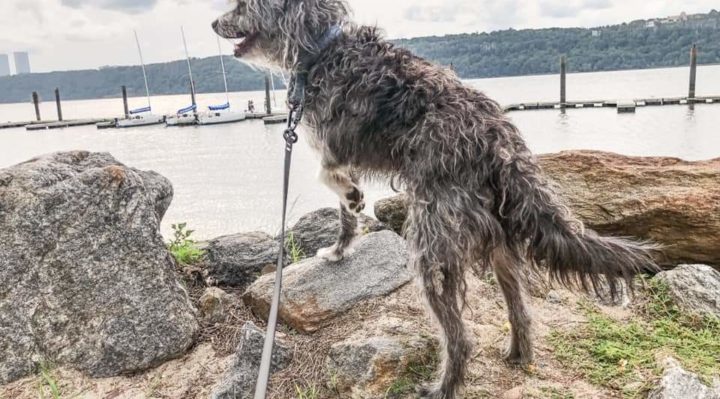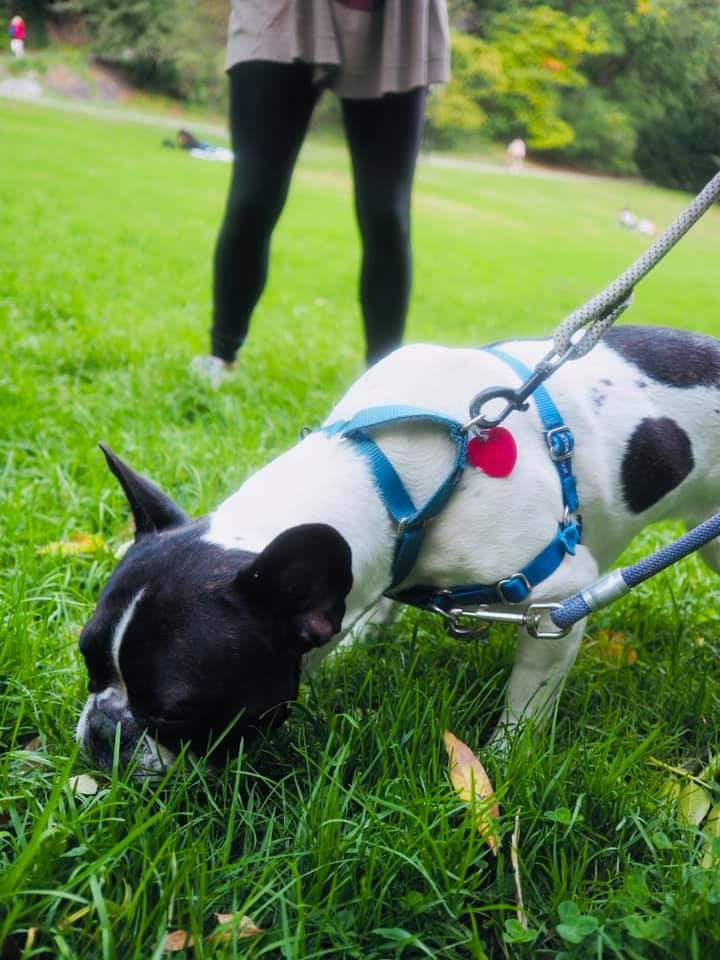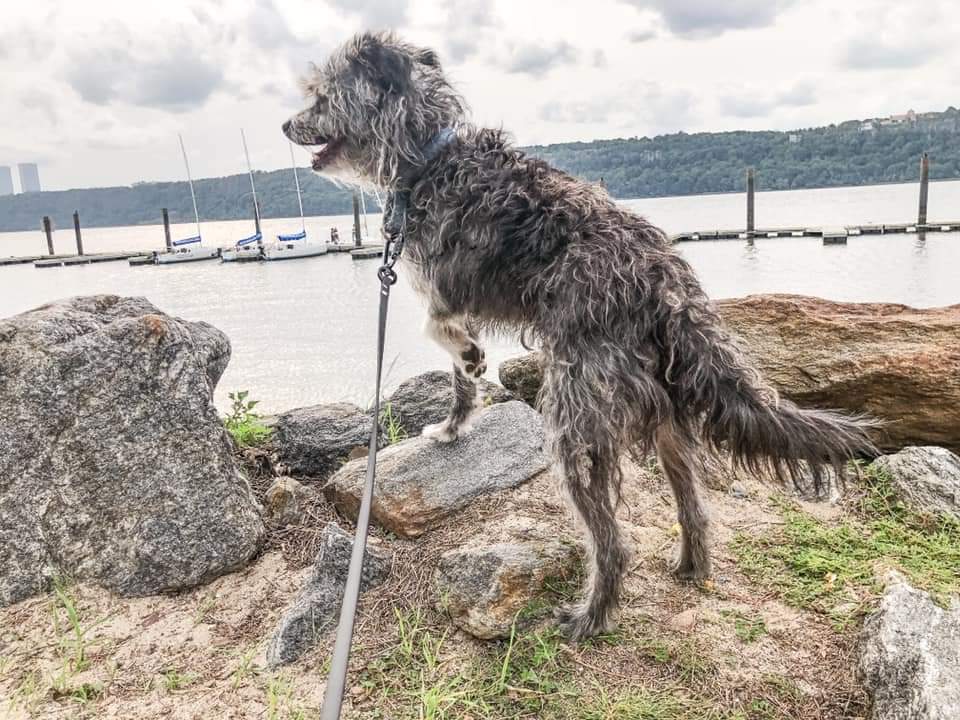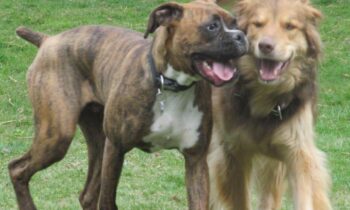
My friend Leslie and her family have just moved to another state. To get to know their new neighborhood and to relieve the stress of moving, Leslie has been walking with Shamu, her black Labrador, around their new home. Leslie posted recently on Facebook her observations of a fellow dog walker she’s seen frequently. Leslie is a dog trainer herself, so it’s not unusual that she’d notice the behavior of the dogs (and their humans) that she encounters on her walks.
Leslie described what worried her about what she saw when this woman walked her dogs.
Leslie McGavin Clinton (South Carolina) I see a lady walking her two dogs multiple times a day past the house, marching along, with nary a pause to sniff. Ever. It makes me sad. And they are on short leashes. She seems never to look at them or speak to them. By contrast, I had Shamu out for a sniffy walk on the long line and randomly reinforced him for offering attention toward me, which he is doing on a regular basis.
I, too, have observed dog walkers in my neighborhood and don’t always like what I see.
I live just off a treed boulevard two blocks from my city’s biggest park, and I have finally gotten used to seeing dog walkers—often with baby strollers—charging along, talking the entire time on their phones, seemingly unaware of anything their dogs are doing. (Maybe their babies, too?) It would be rude to walk that way with another human; it also seems rude to treat one’s canine companion that way. Plus, what a waste of one’s relationship—a drone could walk the dog!
When I made that observation, Leslie replied, “Yep. No relationship-building at all. Opportunity lost.”
I asked our fellow dog professionals to join in with their thoughts for dog walkers who’d like to improve their dogs’ walks—to make those walks more satisfying, both to the dogs and to the humans. Here are some of these professionals’ suggestions.
Debby McMullen (Pennsylvania) ‘Sniffaris’ in places with lots of trees/bushes/brush/critter smells. Non–well-groomed parks are better than cemeteries and cemeteries are better than the neighborhood. Sniffaris let the dog choose the route, within practical and safe confines, and the speed of the walk. Mileage covered is irrelevant.
Jennifer Bristol (New York) Nature’s snuffle mat.

Photo by Jennifer Bristol
Geralynn Cada (Kansas) I ask them to perform tricks on their walks! Especially when the walk cannot be as long as usual.
Alisha Ardiana (California) I like to give my dog choice in the walk. Choice does not include approaching strangers, other dogs, or trash that could be harmful. But if she wants to go to the left or the right, that’s cool. If she would like to walk up one street versus another, that’s awesome. And many times, she has led me to a dead pigeon or rat. Because I try to make the walk her choice.
Nathalie Mosbach Smith (California) Let them sniff. A dog walk is about meeting your dog’s needs, not yours. Sniffing is simply the best!
Annie Zeck (Washington) Walk with a friend and her/his dog.
Kat Camplin (California) Stop and sniff. Also ‘canine parkour’—going up on and around things found in the environment.

Photo by Jennifer Bristol
Micha Michiewicz (Maryland) Letting them sniff to their heart’s content—on a loose leash! (One of the best ways to teach loose-leash skills, by the way.) I also like to point out interesting things that they missed, like feathers, a pee-station rock, etc. For dogs that enjoy it, we change up where we walk. For dogs who feel comfortable with the predictability of the same path, we instead check out the new things on that path. Those are smaller explorations, so they can still experience the novel, but at a lower level for confidence.
We also mix it up with some positive obedience training—never sustained throughout the walk, only at random and sporadically. Unpredictable cuing also. All this helps to generalize behaviors so that the dogs, who don’t generalize as well as we do, become capable of understanding those cues in most situations where you’d ever need them.
I prefer to focus on things that are safety-oriented—like stay and recall, leave it, and so on—and things to help us stay aware of each other, like a check-in where you call the dog’s name and reward the dog for paying attention, and auto-check-ins, where the dog checks in unsolicited by you. Always release back to resume their walk! If you find that the dog is doing too many auto-check-ins, back off the higher-value reinforcement and instead use warm praise to let them know that the behavior’s still being noted, but they don’t have to do it so much.
Lastly, I’m all for giving choice and freedom, but I’ll ask them to “leave it” or to do a “let’s go/emergency U-turn” to prevent risky situations where the dog might be unsafe. I prefer to err on the safe side to keep the walk both safe and pleasant. Walks can be a safe, fun learning experience.
Does your dog get the most out of walking with you?
Try some of our suggestions to enrich the experience!



